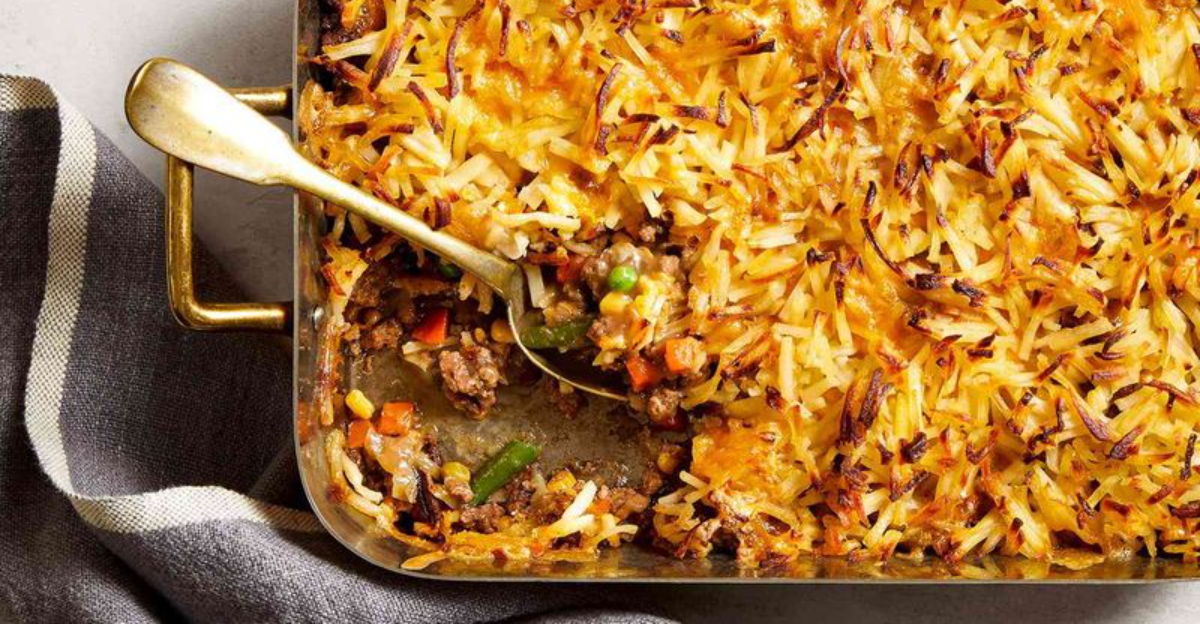5 Big Mistakes Everyone Makes When Baking A Casserole

There’s something magical about pulling a bubbling, golden casserole from the oven.
I’ve been making these one-dish wonders since college, and trust me, I’ve made every mistake in the book!
Casseroles seem simple, but they’re actually little science experiments happening in your oven.
Avoiding these common pitfalls will transform your next casserole from merely edible to absolutely delicious.
1. Skipping The Pre-Cook Step
Last Thanksgiving, I tossed raw pasta directly into my tuna casserole. Big mistake! My family politely crunched through undercooked noodles while I died inside. Raw ingredients don’t always fully cook in the casserole’s limited baking time.
Pasta, rice, and dense vegetables like carrots and potatoes need a head start. Give them a partial pre-cook—about halfway done is perfect. This ensures everything finishes cooking at the same time, creating that harmonious blend of flavors casseroles are famous for.
For pasta, cook it 2-3 minutes less than the package directions. For vegetables, a quick blanch or sauté works wonders. Your teeth (and dinner guests) will thank you!
2. Drowning Your Dish In Liquid
My first attempt at chicken and rice casserole resembled soup more than dinner. I’ve since learned that excess liquid is a casserole killer! Too much moisture creates a soggy, unappetizing mess that never quite sets up properly.
The ideal casserole has just enough liquid to cook the ingredients while creating a creamy sauce. Remember that vegetables release water as they cook, and condensation builds up under the cover. When using canned soups or cream, you might need less liquid than you think.
A good rule I follow: the liquid should come just halfway up the solid ingredients in your dish. If you’re unsure, it’s better to start with less—you can always add more during baking if things look dry.
3. Leaving Your Casserole Uncovered
Once I baked a potato casserole uncovered for the entire cooking time. The result? A dry, crusty top layer with undercooked ingredients below. Facepalm moment!
Covering your casserole for most of the cooking time creates a mini steam environment that cooks ingredients evenly. The cover traps moisture, preventing the top from drying out while allowing heat to circulate throughout the dish. Think of it as creating a little sauna for your food.
My foolproof method: cover with foil for about 75% of the cooking time, then remove it for the final stretch to develop that gorgeous golden-brown top. This two-step approach gives you the best of both worlds—properly cooked throughout with that irresistible crispy finish.
4. Forgetting To Season Each Layer
“Where’s the flavor?” my brother once asked about my lasagna. Ouch! I’d only seasoned the top layer, leaving the rest bland and forgettable. That day changed my casserole game forever.
A properly seasoned casserole needs attention at every level. Each component—vegetables, proteins, starches—should be seasoned individually before assembly. Salt and pepper are just the beginning; herbs, spices, and aromatics build depth throughout the dish.
When layering, I treat each level as its own mini-recipe. A pinch of salt on potatoes, herbs sprinkled on vegetables, and seasoned meat create a symphony of flavors that meld beautifully during baking. Your taste buds will detect the difference between a one-note casserole and one that’s been thoughtfully seasoned throughout.
5. Serving Straight From The Oven
Picture this: I proudly carried my bubbling mac and cheese to the table, served everyone immediately, and watched as the molten filling ran everywhere! The missing step? Resting time.
Just like meats need to rest after cooking, casseroles benefit tremendously from a 10-15 minute timeout after leaving the oven. This brief waiting period allows the proteins to relax and the starches to absorb excess moisture. The filling thickens, flavors settle, and temperatures moderate to prevent burned mouths.
Patience pays delicious dividends here. While waiting, I cover the casserole loosely with foil to keep it warm without trapping steam that would make it soggy. This simple step transforms a runny mess into a perfectly sliceable, picture-worthy dish that holds its shape on the plate.
